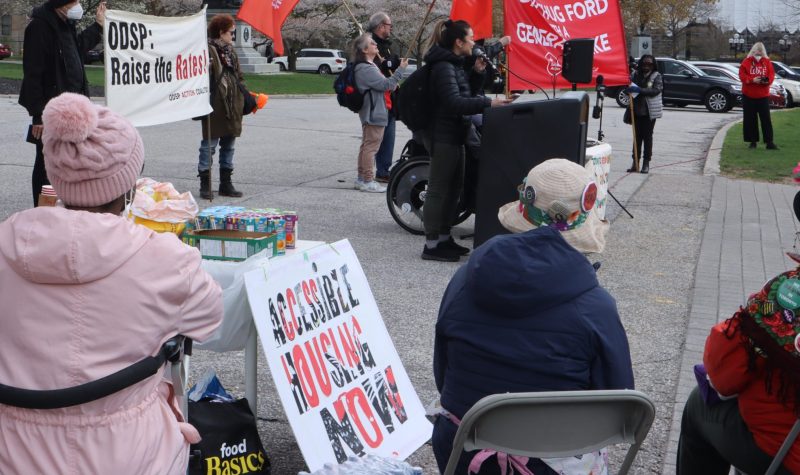While national accessibility week just ended, the Accessible Housing Network (AHN) is continuing to fight for the homes that accommodate the elderly and disabled.
In Ontario, it is estimated that over five million people who are elderly or disabled. The AHN has found that most homes in the province are not accessible to them.
On the Ontario government's website, it states that only 15 per cent of newly constructed multi-unit buildings have to have basic accessibility features. Kate Chung, co-chair of AHN, says that 15 per cent is not enough and wants to implement universal design in the construction of buildings.
“Universal design features things like wider doorways, level entrances to buildings and slopes instead of steps,” says Chung. “They help everybody; if you’re pushing a baby carriage, if you’re moving furniture or if you’re delivering anything.”
Universal design, as stated on the AHN website, also includes changes to each unit like creating space for those in wheelchairs and walk-in showers or tubs and installing grab bars in the washroom.
With units that were not built with accessibility in mind, residents often have to pay out of pocket to add those features.
Chung is 80-years-old and lives in an older building. Both Chung and her husband have had surgeries that required them to use a walker for a period of time. She and her husband have retrofit their home to accommodate their needs. They have paid over $18,000 to put in a walk-in shower and a stacked washer and dryer to avoid scenarios where they could fall.
“This is important to have as little to step over as possible because tripping causes falling and more people trip and fall in the bathroom than anywhere else, and I really don’t want to have a broken hip,” says Chung.
Not everyone has $18,000 saved for repairs like this and some can not, Chung says. Those who are disabled can face issues even affording a place to live, let alone one that is accessible, says Elizabeth Mohler, a visually impaired doctoral student at Western University.
“A huge issue is just being able to find housing that’s accessible and affordable. Only 15 per cent of homes that are built have to be visitable, which is not the same as fully accessible,” says Mohler.
Affordable and accessible homes for the elderly and disabled is something that both Chung and Mohler say are important to have. Chung says that those just do not exist, adding that the Accessible Housing Network will continue to campaign for accessible housing until it is completely implemented..
“There simply isn’t accessible housing, so people on ODSP whether they have a disability or not are struggling because ODSP is inadequate,” says Chung. “You could have an adequate income and still not be able to find accessible housing.”
Listen to the CJRU story below:


